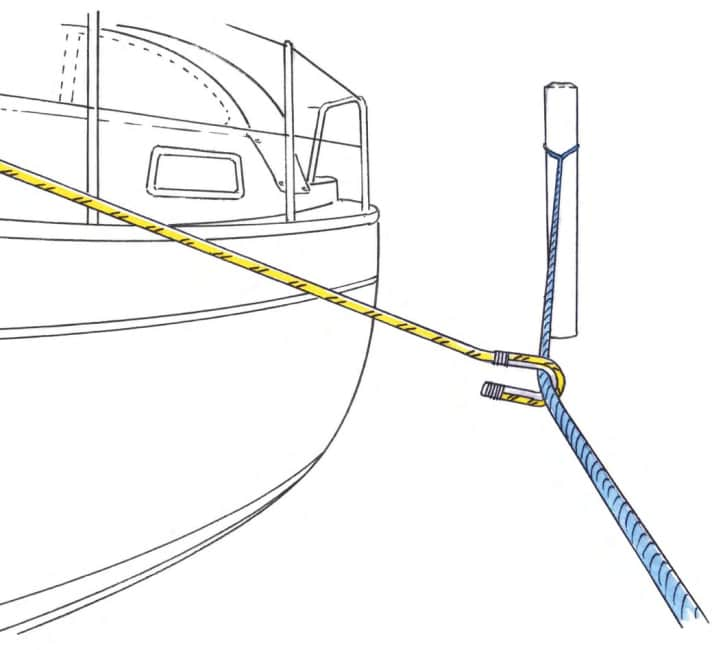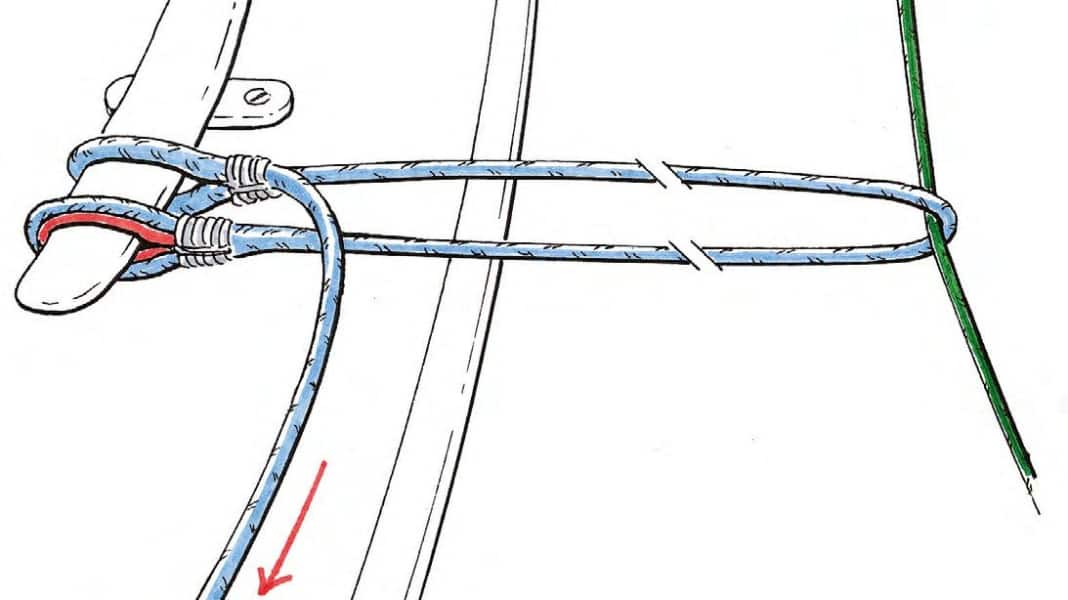
One-handed safety line
A solution for unfamiliar boxes. Two eyes are tied into a line that reaches up to the cockpit. The last one attached has an integrated rubber loop to prevent it from slipping off unintentionally. When the line is pulled, both eyes detach from the cleat horn and the bow is free.
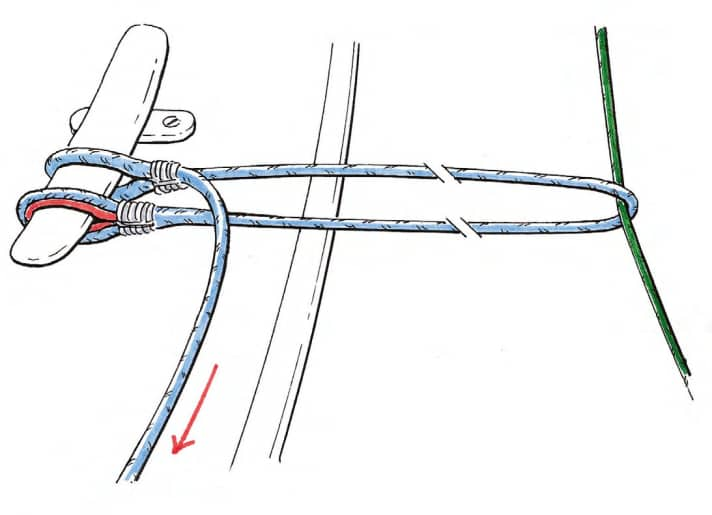
Simple tiller pilot
An inexpensive tiller lock is good, a free one is even better: I tied a bowline to the pushpit on the port side, then went round the tiller with a round turn and round the support of the pushpit again on the other side. There I attached the line to the tether again with a stopper bar. I have been using this solution on my trimaran for 30 years without any problems and can loosen the line in a flash and steer freely.
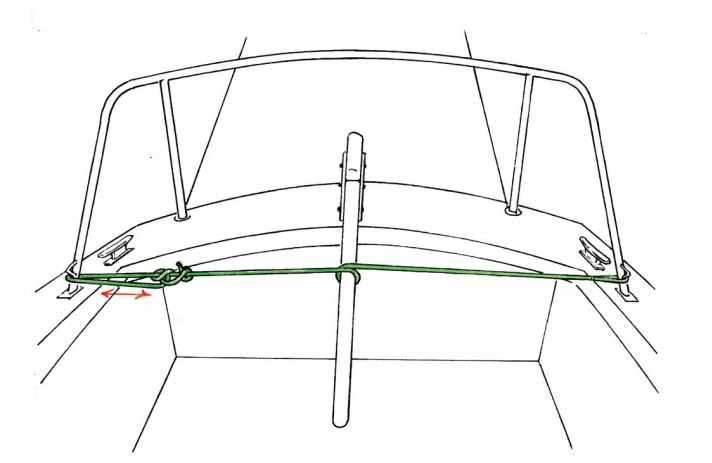
Impact protection for the bow
During single-handed manoeuvres, the skipper cannot normally fender off at the bow himself if he is standing at the wheel. However, at least with a ploughshare anchor, a ball fender can be attached without slipping and thus serves as a shock absorber.
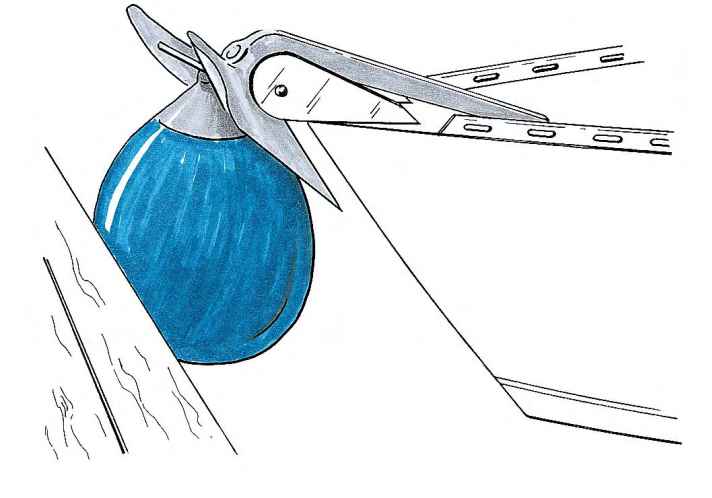
Anchor swivel arm
Fastening the anchor at the stern by hand can quickly lead to scratches in the hull. If you frequently anchor astern, you should attach a fixed anchor gallows. For occasional anchoring, a roller can also be mounted on the swim ladder, as shown here. This keeps the iron free from the stern. Remove the hawser from the pulley and cover it after the mooring.
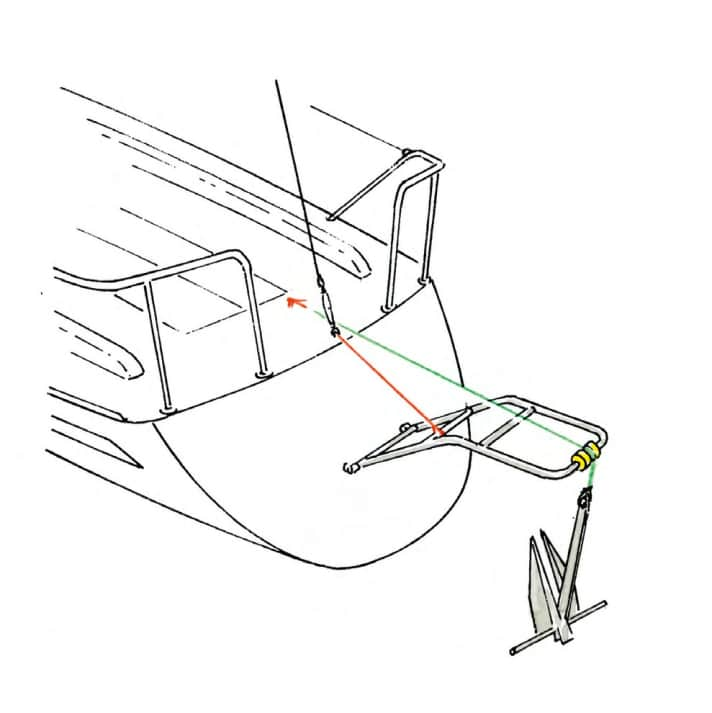
Cockpot for mooring lines
If, for example, the skipper wants to release a lead line himself when casting off, both ropes must be led into the cockpit. One is cast off and the other is used to haul in the line. This takes time and there is a risk of the line getting caught in the propeller. A backhaul line not only allows a shorter mooring line, it also doubles the hauling-in speed.
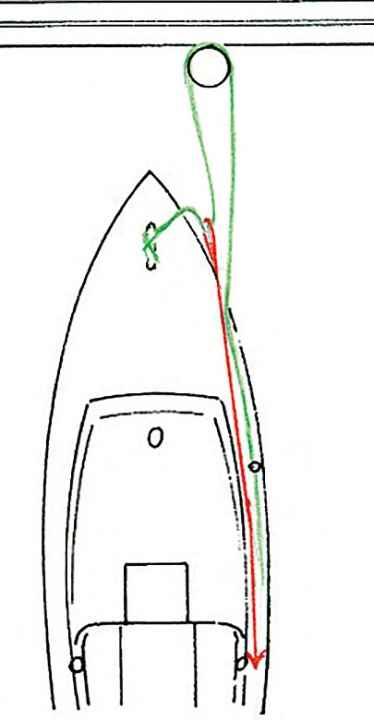
Easier centring
Here, the spreader ropes are tied to the centre. They now run in a wedge shape and hold the bow of the yacht in the centre when mooring and unmooring. Once the yacht is moored, they can be repositioned using snap hooks and rings so that they do not rub against the hull and neighbours can use them as mooring lines again.
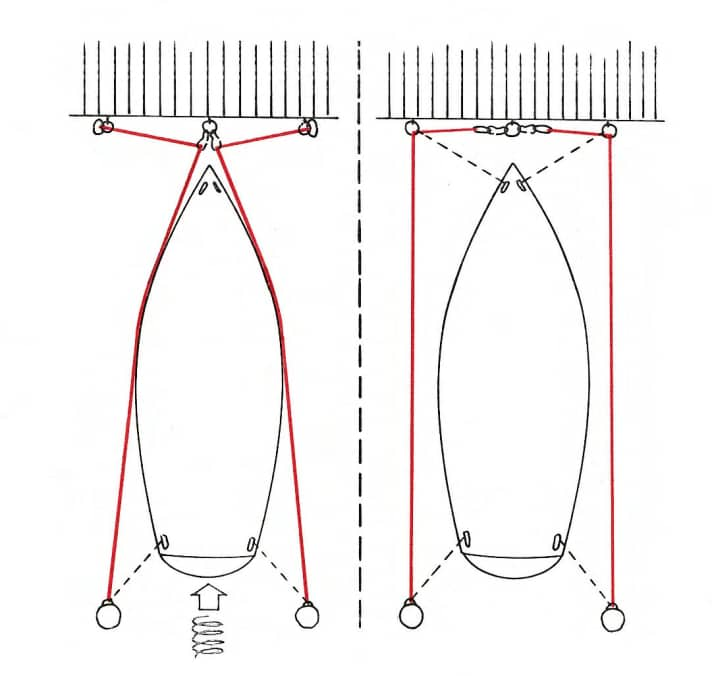
Remote control lines
We didn't want to miss out on the convenience of lazy-jacks on our small cruiser. However, the system should be able to be operated from aft and with one hand. Our solution: two clamps with guide brackets are screwed to the boom at the boom clew. A line runs through the clamps from the spreader. This leaves enough slack to pull the line parallel to the boom in the direction of the mast. Two small blocks are tied into the line between the clamp and the spreader. A second line starts at the chime fitting and runs through the eye on the port side and under the boom to the second eye on the starboard side. From there it goes back to the lazy-jack and is led in the boom to the nock. To push the lazy-jacks through, pull the large loop into the two clamps. When taking it away, release the clamps, pull the line on the boom nock and bring the lazy-jacks up the mast.
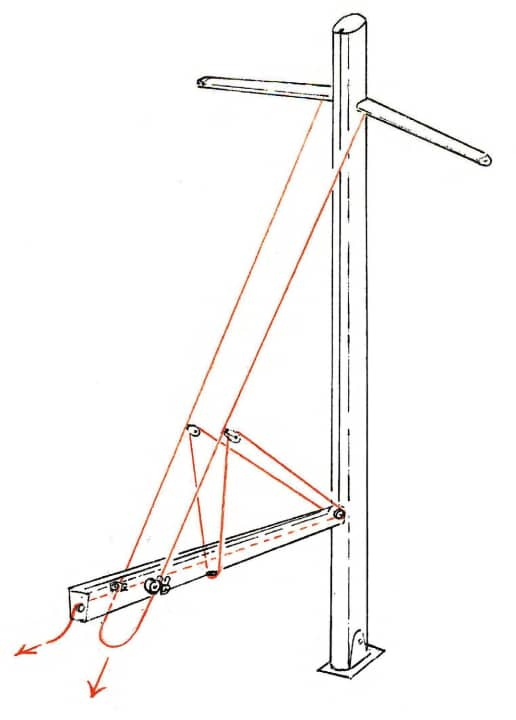
Help for upholstery
Folding the main or genoa alone doesn't work well, or at least it usually doesn't turn out well. However, large glue clamps from the DIY store can replace the crew member helping out: Fold in the leech and lay it on top of each other, clamp it, fold the luff, clamp it and so on. Then roll up the sail and remove the parts. The clamps are available for around three euros each.
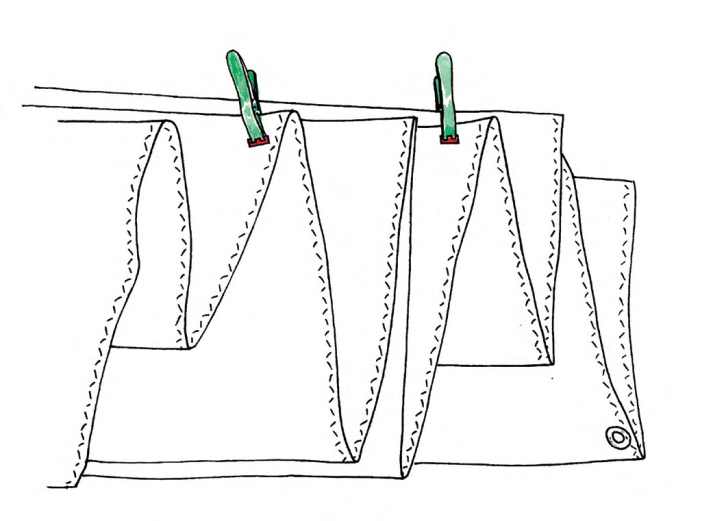
Bullstander in a tree
A bullstander is a very useful device on downwind courses. We have it permanently installed in the main boom. As there were still free pulleys on the boom and mast foot, the line could be deflected into the cockpit. It exits at the boom clew through a tied-in thimble and can be hooked into one of the two strops provided for this purpose using a snap shackle on both the port and starboard sides. The strops in turn are attached to the toe rail and are held in position by rubber bands. When not in use, the bull pole sits tightly in the boom.
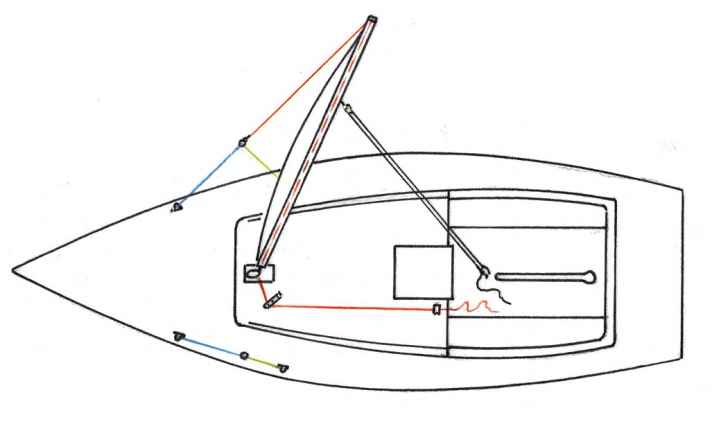
Mooring aid for crosswinds
I drive halfway into the box, throw the end of the hook over the stretch line to windward and turn the rope of the line until the opening of the hook points towards me. One pull on the line and the hook engages. The rope is attached to the pulpit with a weaving line. Now I can lay the aft mooring lines over the stakes and motor to the jetty. Tie up the aft mooring lines and let the engine push lightly. Now I can moor the mooring lines at the front. The weaving line of the hook line is released, the hook is disengaged from the stretch line with a jerk and brought back on board.
